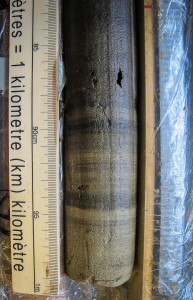Master’s Thesis: Assessing wildfire threat to drinking water supply
Co-supervisors: Dr. Ian Walker (UBCO) and Dr. Kendrick Brown (Canadian Forest Service)
Overview
As the climate changes, wildfires are becoming more frequent and severe. Source waters are increasingly at risk of contamination by post-fire runoff. I’m using paleoecological and geochemical methods to characterize the relationship among wildfire, water quality, vegetation, and climate over time. The results of my research will help water suppliers better manage their catchments to reduce wildfire risk to drinking water.
Details
Sediment cores were collected from lakes within two British Columbia watersheds: the Greater Victoria Water Supply Area on Vancouver Island and the Okanagan Basin supplying Kelowna. The former is characterized by a low-frequency fire regime, whereas frequent fires typify the latter. Accurate age-depth models were established using radiometric dating. The cores have been sub-sampled for analysis of the following paleoenvironmental indicators:
lakes within two British Columbia watersheds: the Greater Victoria Water Supply Area on Vancouver Island and the Okanagan Basin supplying Kelowna. The former is characterized by a low-frequency fire regime, whereas frequent fires typify the latter. Accurate age-depth models were established using radiometric dating. The cores have been sub-sampled for analysis of the following paleoenvironmental indicators:
- Particulate charcoal: Charcoal fragments are being counted using optical microscopy and imaging software. Charcoal flux will be analysed to infer local and regional fire activity.
- Pollen: Pollen is being identified and quantified using optical microscopy. Relative species abundance will be analysed to infer vegetation community composition.
- Magnetic susceptibility: A magnetic susceptibility sensor was used to measure down-core variations in sediment magnetism and identify major erosion events.
- Stable isotopes: The relative abundance of stable carbon and nitrogen isotopes will be analyzed at high resolution across select fire horizons to characterize ecosystem impacts and recovery following major fire events.
- Diatoms: Select fire events will be targeted for high-resolution diatom analysis. Diatom community composition is sensitive to changes in nutrient levels, pH, and other key water quality indicators. Transfer functions calibrated using modern data will be used to infer changes in water quality in response to fires.
Taken together, these indicators will provide site-specific profiles of fire activity and associated water quality impacts over thousands of years. These findings will form the basis of watershed management strategies aimed at mitigating future wildfire threat to drinking water supplies.
